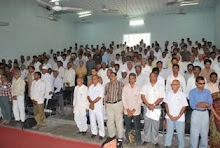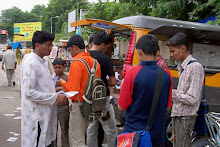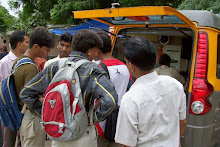Times of India: New Delhi: Wednesday,
June 22, 2016.
An
environment ministry committee has recommended reduction of the "no
development zone" (NDZ) as specified under the coastal regulation zone
(CRZ) notification 1991.
It has also
recommended allowing tourism facilities and other constructions within the NDZ.
The committee headed by Sailesh Nayak, secretary, ministry of earth sciences
has suggested a number of amendments to the CRZ notification in its report
based on its review of issues in coastal states.
Interestingly,
the committee report was released under RTI about 16 months after the
application was filed.
"This
report had been denied since the time the application was filed in February
2015 on the grounds that the government had not approved it," RTI
applicant Kanchi Kohli said.
The
disclosure came after an order of the Information Commissioner, Prof M Sridhar
Acharyulu on May 13 which stated that the ministry "cannot invent a new
defence or exemption such as 'the report is under submission', 'file is pending
consideration' and 'unless approved it cannot be given', etc, which are not
available under RTI Act, 2005, such an illegal refusal will amount to denial of
information which would invite penal proceedings under Section 20 of RTI Act,
2005."
The committee
has made some recommendations that could dilute several aspects of protection
to CRZ areas. For instance, the committee suggests that buildings can be
constructed behind existing structures and roads in CRZ II (built up cities and
towns) areas as per existing Town and Country Planning norms.
It divides
CRZ III (relatively undisturbed areas including rural areas) areas into densely
populated rural areas and rural areas with lesser regulation through the
reduction of the "no development zone" to 50 metres.
The "no
development zone" (NDZ) is 200 metres from the high tide line as per CRZ
notification 1991.
The report
also allows for housing infrastructure and slum redevelopment activities in CRZ
II and tourism in CRZ III areas based on town and country planning norms and
other state regulations.
The committee
recommends "temporary tourism facilities in the NDZ. But if the NDZ falls
on the landward side of a national or state highway, it suggests permitting
construction of permanent tourism facilities. The committee also mentions
reclamation of the sea bed in CRZ IV (coastal stretches in the Andaman &
Nicobar, Lakshadweep and small islands, except those designated as CRZ-I,
CRZ-II or CRZ-III) area for "ports and harbour, fisheries-related
activities and other infrastructure required in the larger public interest such
as bridges, sea-links on stilts, roads, important national installations
related to coastal security, tourism."
The committee
mentions the identification and delineation of "ecologically sensitive
areas" (ESAs) in CRZ I (ecologically sensitive) along the coasts, which
includes mangroves, beaches, coral reefs and others. It suggests that state and
union territories prepare coastal zone management plan (CZMP) as per guidelines
suggested by the committee. All ESAs should be notified under the environment
protection act 1986 by state governments. The report recommends delegation of
powers to prepare CZMPs to state governments.
While the
ministry did not release the committee report, it did make a number of
amendments to the CRZ notification, 1991. Earlier this year, fishing
communities in Puducherry and other areas objected to an amendment that allowed
construction of roads in notified areas.
"The
suppression of Shailesh Nayak report while issuing successive amendments gives
rise to many suspicions, which need to be cleared. Copy of the report could
have been given saying it is pending for approval," the information
commission observed.
Kanchi of
Centre for Policy Research (CPR)-Namati Environment Justice Programme had
submitted to CIC that "such developments on the coast have a direct
bearing on over 3,200 marine fishing villages.
As per the
Marine Fisheries Census in 2005, there are 756,212 households a total of 3.52
million people along mainland India's coastline. Nearly half of this population
(over 1.6 million people) is engaged in active fishing and fishery--related
activities which is why the committee report has a direct bearing on them and
should be released for public scrutiny.
The committee
members had meetings with the governments of Maharashtra, Karnataka and Kerala
and also invited representatives of state and union territory governments for a
meeting Delhi. The meeting details are provided in the report.
It's not
clear whether any consultations were carried out with coastal communities,
fishing unions or private parties.
"While
the piecemeal amendments have sought public comment, this road-map itself has
been strictly kept out of public view," observed Kanchi.














































































